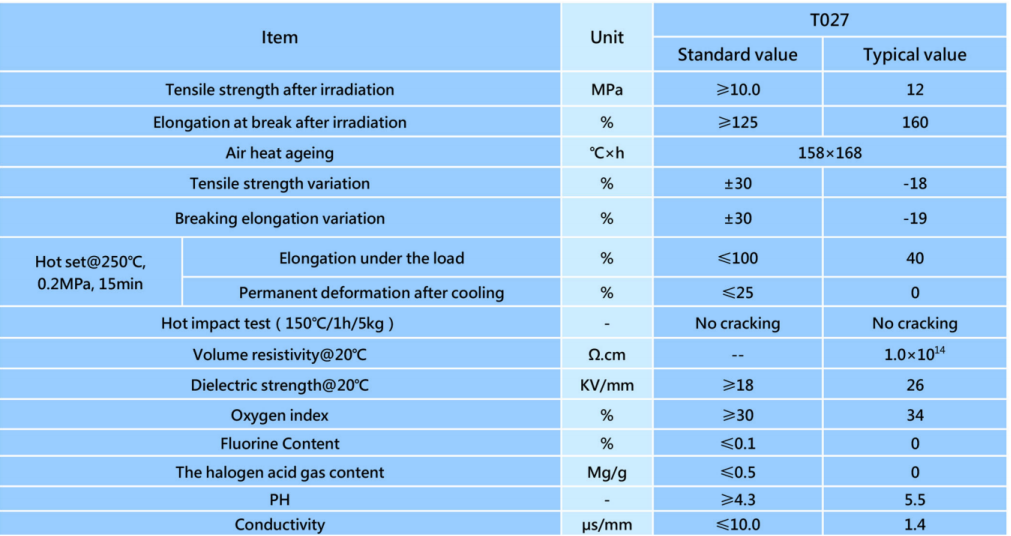Innovative Solutions: Irradiation Crosslinking LSZH HFFR for Photovoltaic Cable
![T027(1)]()
Introduction:
Irradiation crosslinking Low Smoke Zero Halogen (LSZH) Halogen-Free Flame Retardant (HFFR) compounds have emerged as a game-changer in the realm of photovoltaic (PV) cables. These advanced materials offer a blend of enhanced safety, durability, and environmental sustainability, making them the preferred choice for solar power infrastructure. By leveraging irradiation crosslinking technology, LSZH HFFR compounds provide superior performance in harsh environments, ensuring reliable power transmission and minimizing the risk of fire hazards.
Application:
The application of irradiation crosslinking LSZH HFFR compounds in photovoltaic cables spans across various aspects of solar power generation and distribution. In PV systems, where cables are exposed to extreme temperatures, UV radiation, and mechanical stress, the use of LSZH HFFR compounds ensures long-term reliability and safety. These compounds offer excellent resistance to weathering, moisture, and abrasion, making them suitable for both outdoor and indoor installations.
Moreover, irradiation crosslinking enhances the thermal stability and electrical properties of LSZH HFFR compounds, enabling efficient power transmission and minimizing energy losses. This is particularly crucial in large-scale solar farms and grid-connected PV systems, where maximizing energy yield and minimizing maintenance costs are top priorities.
In addition to their superior performance characteristics, LSZH HFFR compounds are environmentally friendly, as they do not contain halogen elements and emit minimal smoke and toxic gases in the event of a fire. This aligns with the sustainability goals of the solar industry, where reducing the environmental impact of solar installations is a key focus.
Overall, the adoption of irradiation crosslinking LSZH HFFR compounds in photovoltaic cables signifies a paradigm shift towards safer, more reliable, and sustainable solar power infrastructure. With their unmatched combination of safety, durability, and environmental responsibility, these advanced materials are driving the evolution of the solar industry towards a greener and more sustainable future.
































